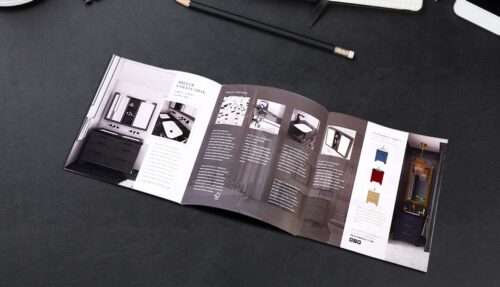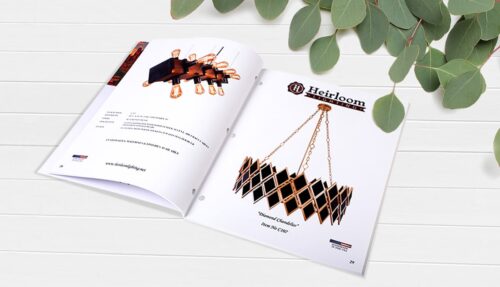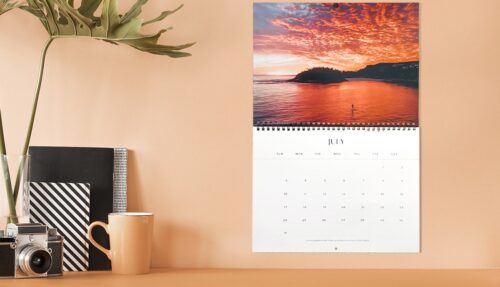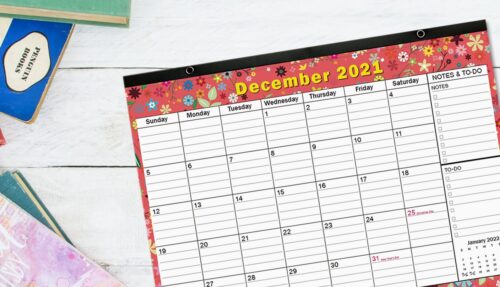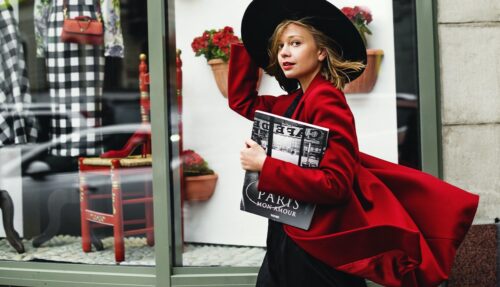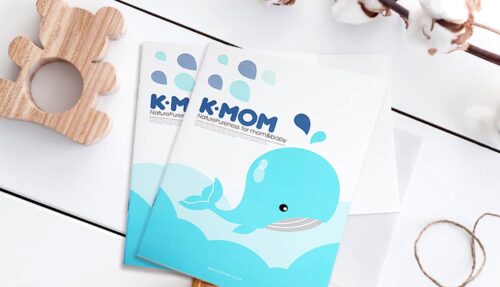If you're a visual artist or photographer, greeting cards offer a stylish, economical, and effective marketing strategy
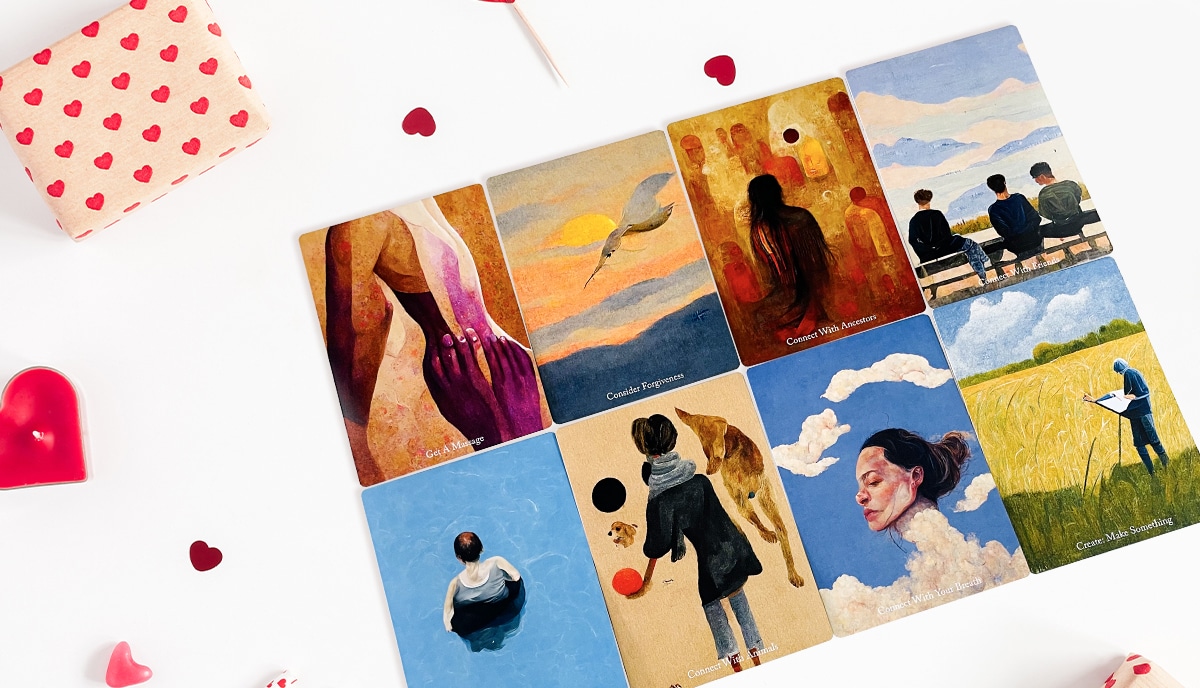
It’s an all too common mistake to think of greeting cards as a peripheral extra if you have the time and money to be bothered with them. But don’t make that error. Greeting cards offer a fantastic opportunity to present your work, develop your brand as an artist, and attract new customers. Smart artists and photographers integrate them into their core marketing plan.
Here’s a list of just a few of the reasons why greetings cards make such fantastic marketing tools for artists and photographers:
- cost-effective—it takes only a small investment to produce truly beautiful reproductions on high-quality cardstock
- memorable—original artwork stands out from the crowd; these are the greeting cards that people remember
- collectible—art-based greeting cards are keepers; they’ll end up on the mantlepiece longer, get sent to more people, or even find their way into an album or stuck on the fridge to be seen by even more potential customers
- easy to distribute—compared to a hefty portfolio or expensive art book, greeting cards are small, light weight, and easy to carry around, hand out, mail to stores and galleries, and otherwise get them seen
So, given even those few advantages, you should see that it’s worth investigating the possibilities of printing your original art-based greeting cards. Now let’s dive into this in a bit more detail to see what you need to consider to make this strategy work for you as an artist or photographer.
Curation and selection
The first step in making custom greeting cards is to take stock of your portfolio of work and to begin to select and curate each item according to your chosen criteria. For example, you could select work based on a given theme, or a period, or the medium or style. The key here is to work with your selections in the same way as you would for an exhibition. In a sense, when creating a set of greeting cards, the processes are very similar to those needed to make a coherent body of work for a gallery. You may end up with several collections and a few outliers.
Once you’ve selected and curated your sets, give each serious thought and ask yourself to whom you think these images will most appeal. Can you identify specific market demographics such as age, social class, economic status, regional preferences, and so on? This is an important step to think about as it will help you later when it comes to placing your greeting cards in the best outlets—namely, those where your target audience will find them!
Market research and feedback
As marketing tools, greeting cards are multifunctional. Yes, they provide a cheap and efficient way to get your work seen by the wider public; and perhaps people who would not normally discover your studio or enter a gallery in which you have an exhibition. But they also provide you with an opportunity to gather data which you can use to guide the business side of your activities. For example, you might note that a particular thematic or stylistic collection is a guaranteed best seller while another tends to sell a great deal less. Without compromising your artistic integrity — we all need to eat and pay the rent! — you might choose to concentrate on producing similar artworks to those most appreciated by the buying public. Or at the very least, you will have an idea from the miniature greeting card versions of your work, which of the original pieces to prioritize for a given exhibition.
Distributing your greeting cards to retailers, gallery curators, exhibition spaces, and potential collectors is another great way to deploy them. Used like this, they act as a halfway house between a calling card and a full portfolio of work. This is why it’s so important to make sure that you don’t compromise on the quality of the card stock, the colour reproduction, and the print quality.
Choose professional offset printing
When it comes to fine art reproductions, especially when scaled down to the size of a standard greeting card, you should avoid printing them on a domestic or office machine or using the services of a digital-only printer. The fidelity of colour reproduction and the quality of the paper stock available from most digital printers simply won’t cut the mustard.
Offset printing is the most professional, flexible, and high-quality printing process. Also, most offset printers already work with artists, photographers, and other independent creatives, and so they are aware of your specific needs. You will be using the same materials and technology which are used to print high grade fine art reproductions, professional portfolios, and art books.
Photography and scanning
You may be wondering how to turn a potentially large painting, for example, into an image suitable for printing on a greeting card! The answer is that you need to digitize it. And there are two ways to do that: you can photograph the original or you can scan it.
Photography and scanning
If you decide to photograph your work, you’ll need to either employ a professional art photographer or do it yourself. If you do it yourself, you’ll need to invest in a high-quality DSLR (digital single lens reflex) camera. If it’s your first time taking photographs, it may be worthwhile taking a short course, many of which you can find online. The most important factors when photographing artwork are lighting, exposure, and color. Fortunately, with digital photography, you can take hundreds of shots if you need to, experimenting with a range of settings, and then select the image which works best. With a software application such as Adobe Photoshop, you can also fine-tune and adjust the images to make them look as good as possible.
Scanning your artwork
If you work in traditional media, and you don’t want to photograph your pieces, you’ll need to scan your artwork, as your printer will need digital files. You can take your artwork to a professional studio to be scanned — with prices between $60 to $250 per page for high-quality reproduction — or you can invest in your own scanner. But, aside from potential problems of scale, a typical office or domestic scanner won’t do the job. You’ll need to invest in a special machine, and a scanner suitable for graphic arts reproduction costs between $3000 and $5000, so that’s a significant investment.
We recommend photographing your work. If you have the skills or the time and resources to learn them, then there’s no reason why you shouldn’t do it yourself. Otherwise, the costs of hiring a professional photographer to take the pictures for you shouldn’t be prohibitive, and will certainly be less than buying a fine art scanner!
Singles, sets, and collections
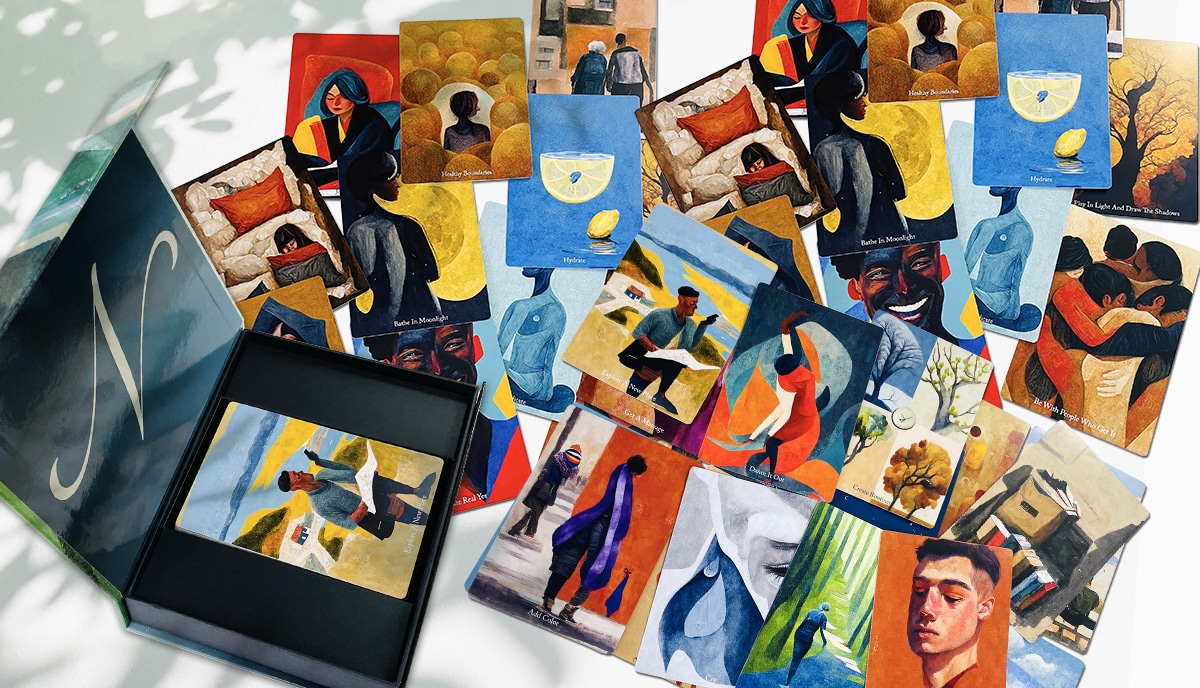
Besides thinking about the practicalities of designing and printing your greeting cards, you’ll also want to decide whether to sell and distribute them as singles, in sets, or as collections. Singles are, as they sound, a single one-off greeting card packaged and sold on its own. A set is a selection of singles collated according to a theme (which could be a season, for example, the subject matter, or even a color scheme) and sold as a unit, and a collection is a larger combination of several sets packaged and sold in a gift box.
The best approach if you have a tight budget is to start with singles and build sets once you have a better idea of which works are most successful. Overall, and once can justify the investment, having singles, sets, and collections in your arsenal is the best and most effective approach as it gives you the widest range of products, price points, and potential outreach.
Whichever option or options you choose, you’ll need to consider envelopes, packaging, and with collections, gift boxes. If you print your greeting cards with us, we can source wholesale envelopes for you or custom-make them if you have specific ideas about paper and style. Singles can be packaged in a simple cellophane wrapper. We are experienced packaging printers, too, and can help you with the design and manufacture of a beautiful custom printed gift box solution for your collections.
Not just a pretty picture
But remember that your greeting cards are more than just pretty pictures: they’re marketing tools. So, in addition to the artwork, you’ll need to add some text. The most important text to include is the following:
- The title of the artwork
- Your name
- The address and phone number of your studio
- Your website URL if you have one
If you want, you can also add a short explanatory paragraph describing the work, the inspiration behind it, and a little about your process and the media you used. While it’s that bit of extra work, this is a very nice touch that personalizes the experience for the customer and also adds value to the image as it gives an insight into the story behind it.
Distributing and selling your greeting cards
Once you have your cards, you may ask yourself what to do with them! The answer is distribution. That simply means getting them out of your studio and into the hands of people who might be interested in buying your artwork. There are several approaches to this. You might choose just one or two of the following methods, or you could opt for all of them.
- Display them at your studio for visitors to pick up or buy.
- Make them available at exhibitions.
- Talk to mainstream retailers and outlets and ask them if they would be interested in stocking your cards. Locally, go in person and speak to the manager or store owner and don’t forget to take a sample pack along with you. If you want to go national or international, you’ll need to pay a distribution agency to handle that for you.
- Send them out to everyone you know—friends, family, business associates, gallery owners, colleagues, and anyone else you can think of!
- Take them to craft fairs and other related events.
- Make them available to buy from your website.
- Sell sets and collections on third-party trading sites such as Etsy, Amazon, and eBay.
You may come up with other ideas for distribution, but those should be enough to get you started. You can also add value to the cards and encourage people to engage with you by offering a discount on your original works with a code printed on the card. Why not, as we’re in the digital age, also add a QR code which potential customers can scan to go straight to your website or online store? With a little imagination, you’ll find dozens of ways and twice as many opportunities to make your greeting cards spread the word about you as an artist and promote your work.
Let us print your custom greeting cards
We’ve enjoyed over a quarter of a century of success in the printing industry and our business goes from strength to strength. In part, our global reputation for excellence is sustained by the expertise and enthusiasm of our staff, the rigor and efficiency of our protocols, our state-of-the-art technology, and a sincere commitment to genuine customer service. Unlike most offset printers who require a minimum order of at least a thousand units, at QinPrinting we’ve set our minimum at just a hundred cards. Get in touch today, either by telephone, email, Skype, or our handy online contact form to discuss your needs or to ask us for a no-obligation quote. We look forward to working with you and you can be sure that we’ll give you our full technical support, advice, and personal attention.






